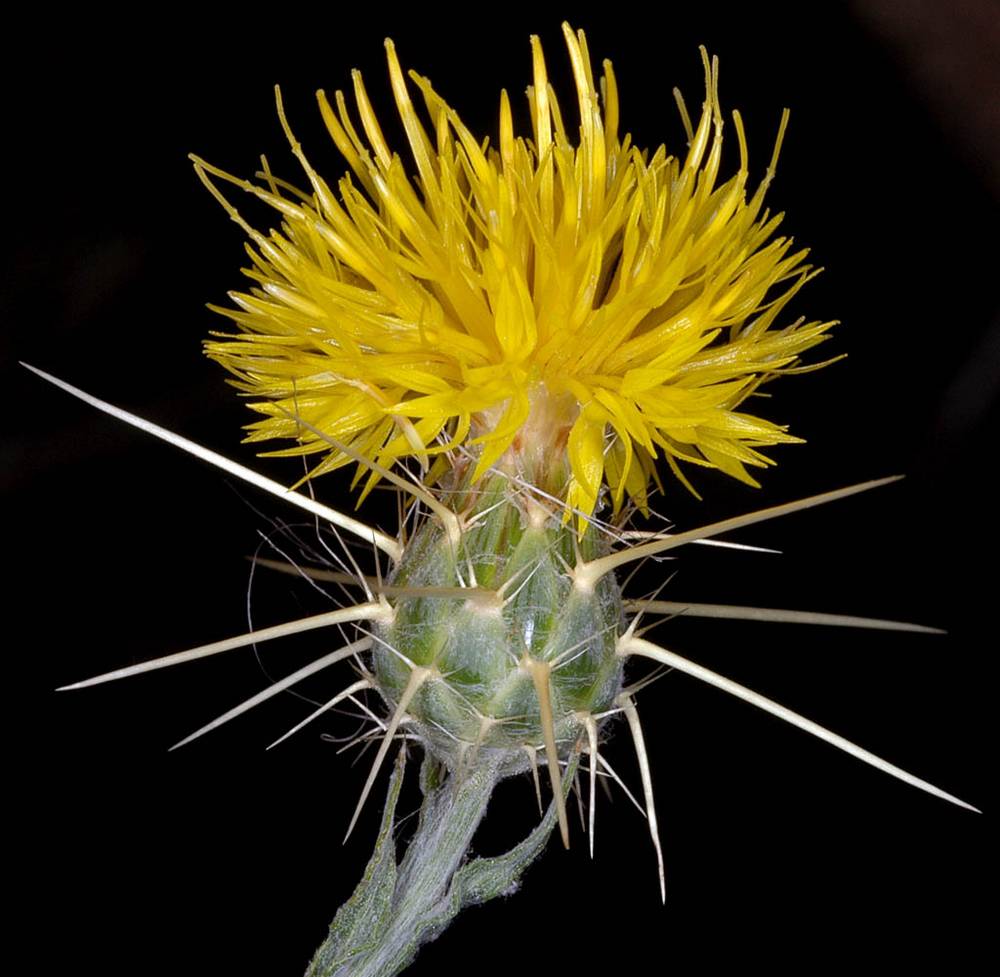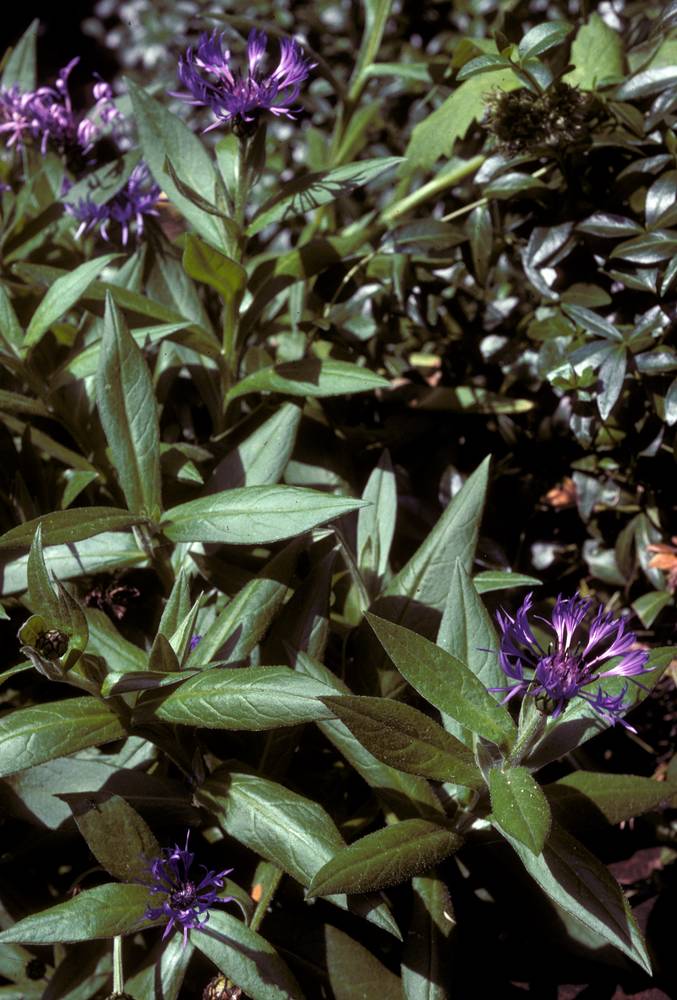Centaurea solstitialis
Centaurea montana
St. Barnaby's thistle, yellow starthistle
montane starthistle, mountain bluet, mountain cornflower, perennial cornflower
1–many, branched from bases, tomentose.
simple or sparsely branched, thinly tomentose to glabrate.
tomentose and scabrous to bristly, bases decurrent;
basal and lower cauline blades often absent at maturity, 5–15 cm, pinnately dissected or lobed;
petioles winged; upper cauline blades oblong to linear, 1–10 cm;
margins entire or slightly dentate, sessile.
thinly villous or tomentose to glabrate;
basal and lower cauline blades ovate to oblong or oblanceolate, 10–30 cm; > 1 cm wide;
margins entire to shallowly dentate or pinnately lobed;
petioles winged; upper cauline blades ovate to oblong or lanceolate, gradually smaller, decurrent;
margins entire or minutely dentate, sessile.
cyme-like clusters or heads solitary.
few-headed corymb-like arrays.
ovoid, 10–15 mm.
campanulate, 20–25 mm.
yellow, sterile florets ? fertile florets, fertile florets 13–20 mm.
sterile florets 25–45 mm, blue, rarely white, pink, or purple, fertile florets 20–30 mm, purple;
anthers dark purple.
outer ovate;
bodies green, palmately spiny;
central spines stout, 10–25 mm; straw-colored; inner with smaller hyaline appendages.
outer lanceolate to ovate, green;
margins scarious with comb-like fringe; appendages not obscuring phyllary bodies, brown to black; inner occasionally without appendages.
dimorphic; outer 2–3 mm, dark brown, glabrous;
pappi 0; inner light brown or mottled, pappi of white bristles, 2–4 mm.
5–6 mm, brown to white with slightly appressed hairs, pappi of bristles, 0.5–1.5 mm.
disciform, pedunculate.
± radiate, pedunculate or sessile.
=16.
Centaurea solstitialis
Centaurea montana
Disturbed areas, roadsides, woods, fields, pastures, streambanks. Flowering Jul–Oct. 0–2000 m. BR, BW, Col, CR, Est, Lava, Sisk, WV. CA, ID, NV, WA; throughout North America; Europe. Exotic.
Centaurea solstitialis is an aggressive weed of pastures and rangeland in western North America, often forming dense stands. This species is cumulatively toxic to horses, potentially causing a disorder known as “chewing disease.” See also C. × gerstlaueri.
Disturbed areas, roadsides, streambanks, open woods, sagebrush steppe. Flowering Apr–Jul. 0–500 m. Casc, WV. ID, WA; north to British Columbia, northeast to MT, northeastern North America; Europe. Exotic.
Bridget Chipman
Bridget Chipman
- Local floras:
BC,
CA,
OR,
WA
- Local Web sites:
CalFlora,
CalPhotos,
Flora NW,
PNW Herbaria,
Turner Photog.
WildflowerSearch
iNaturalist (observations)
USDA Plants Database
- LBJ Wildflower Center
- SEINet
- Plants of the World Online
- Encyclopedia of Life
- Wikipedia
- Google Image Search
- Local floras:
BC,
OR,
WA
- Local Web sites:
Flora NW,
PNW Herbaria
WildflowerSearch
iNaturalist (observations)
USDA Plants Database
- LBJ Wildflower Center
- SEINet
- Plants of the World Online
- Encyclopedia of Life
- Wikipedia
- Google Image Search





